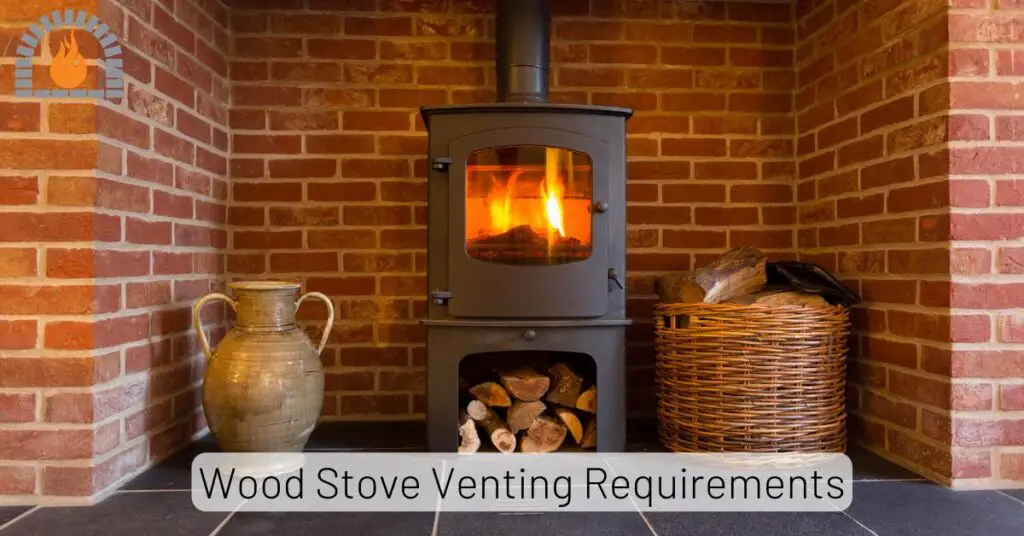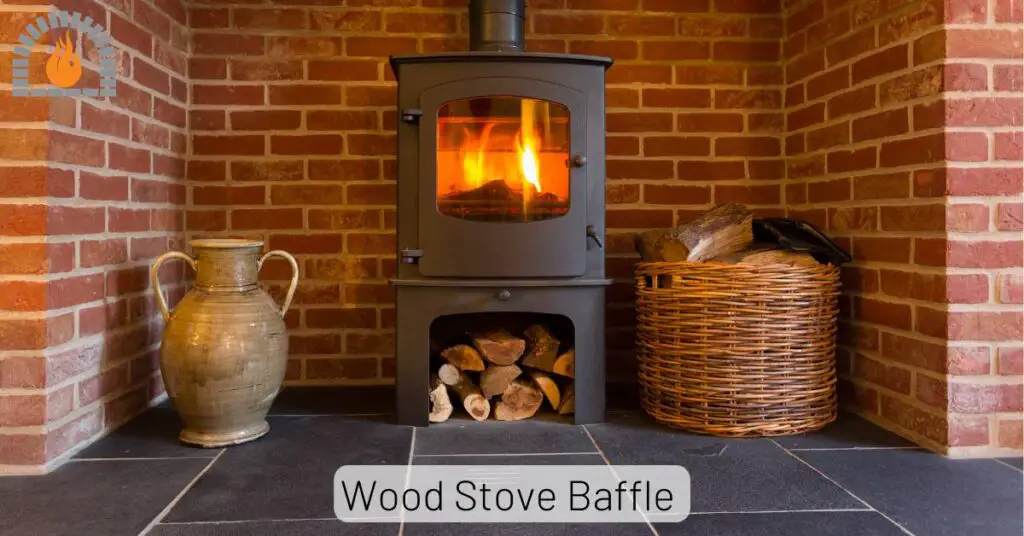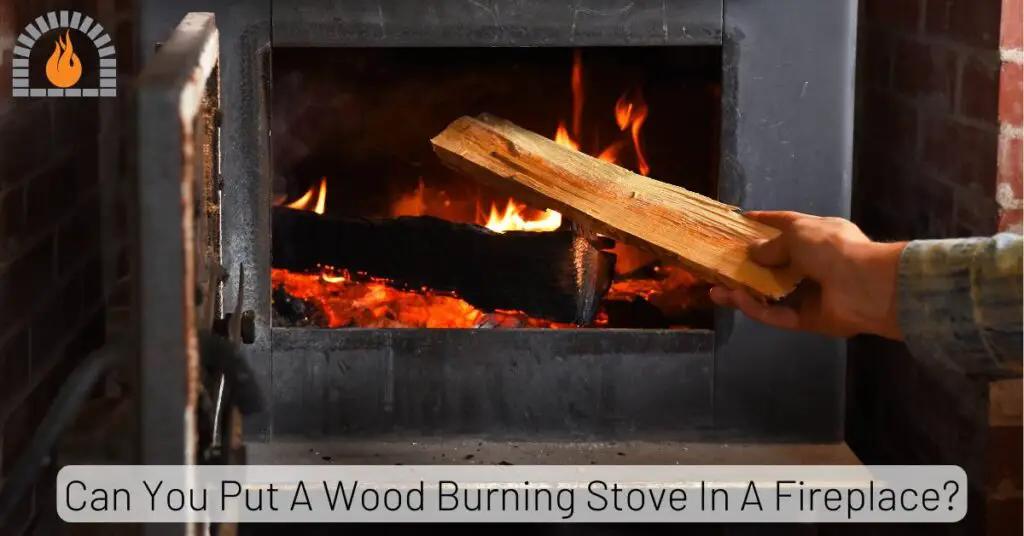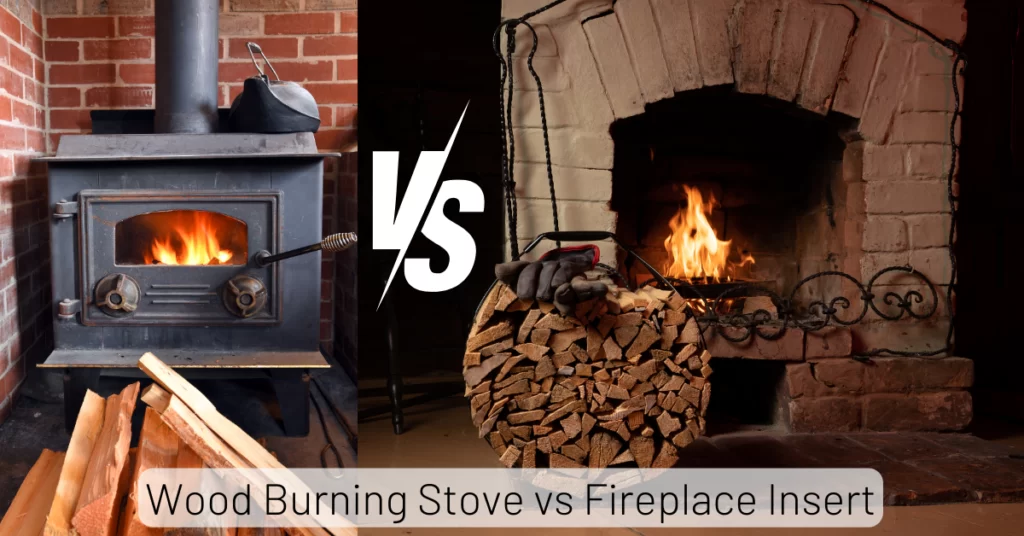Among the most cherished names in the wood stove industry, Vermont Castings stands out with its craftsmanship, heritage, and dedication to heating excellence. And at the heart of its legacy lies the Vermont Casting Vigilant wood stove—a model that combines classic design with reliable performance.
The Vigilant first made its appearance in the late 1970s and quickly became a household favorite for those looking for a wood stove that wasn’t just functional but also aesthetically pleasing. Unlike many utilitarian stoves of its time, the Vigilant brought elegance into home heating. With ornate cast iron construction and a distinctive front-loading design, it wasn’t just a stove—it was a centerpiece.
Even decades later, many homeowners still rely on their original Vigilant stoves. Why? Because Vermont Castings built these stoves like tanks, with a level of craftsmanship that ensured longevity. They were made not only to heat homes efficiently but also to be passed down through generations.
Today, even though modern EPA-certified stoves have taken the spotlight, the Vigilant continues to hold a loyal following. Collectors, off-grid homeowners, and vintage stove enthusiasts still seek them out for their durability, charm, and consistent heating ability. In this guide, we’ll take a deep dive into everything you need to know about the Vermont Casting Vigilant wood stove—its pros, cons, common problems, troubleshooting tips, and maintenance practices.
Features of the Vermont Casting Vigilant Wood Stove
The Vigilant wasn’t just another stove in the lineup; it was designed with purpose and detail. Let’s look closer at the defining features that make it unique.
Design and Build Quality
The Vigilant is constructed from high-quality cast iron, which is known for its ability to hold and radiate heat long after the fire dies down. Unlike steel stoves, which cool off quickly, the Vigilant ensures that warmth lingers, creating a cozy environment. Its ornate patterns and vintage aesthetic give it a unique charm that fits perfectly in cabins, farmhouses, or traditional homes.
The build quality is second to none. Vermont Castings stoves are built with interlocking cast panels, sealed with high-temperature cement and gaskets to prevent leaks. This gives them an airtight burn chamber, critical for efficiency and safety. The craftsmanship not only ensures function but also adds a touch of artistry.
Heating Capacity and Efficiency
Depending on the model, the Vigilant can heat spaces ranging from 1,500 to 3,000 square feet. That makes it a powerhouse for larger homes or open-concept spaces. With its large firebox, it accommodates longer logs, reducing the frequency of reloads. Many homeowners appreciate that it can burn steadily overnight, maintaining warmth without constant tending.
Though it predates modern EPA standards, the Vigilant was designed with efficiency in mind. It uses secondary combustion air channels to improve burn quality, reducing smoke output compared to older stoves of its era. While not as clean-burning as today’s EPA-certified stoves, it still offers a respectable performance.
Aesthetic Appeal and Classic Charm
What really sets the Vigilant apart is its timeless look. The stove features intricate castings, decorative doors, and an authentic vintage charm that many modern stoves simply lack. It’s the kind of piece that becomes a focal point in any room, blending functionality with beauty.
For those who appreciate traditional craftsmanship, the Vigilant isn’t just a heater—it’s a piece of history. It brings a rustic, old-world feel to a home, making it as much a conversation piece as a functional appliance.
Pros of Vermont Casting Vigilant Wood Stove
Like any heating appliance, the Vigilant comes with its own strengths. Here’s why many homeowners still love it decades after it was first manufactured.
Long-lasting Durability
One of the biggest advantages of owning a Vigilant stove is its sheer durability. These stoves were built to last, often outliving their owners. With proper care, it’s not uncommon to find 40-year-old Vigilants still operating efficiently. Unlike cheaper stoves that degrade quickly, the Vigilant’s cast iron body can withstand years of heavy use without significant wear.
Efficient Heating for Large Spaces
The Vigilant shines in its heating ability. Its large firebox allows for longer burns, and once the cast iron heats up, it radiates warmth evenly throughout the space. Homeowners in colder regions appreciate that it can keep a house warm through long winter nights without constant tending.
Versatility in Fuel and Burning Options
The Vigilant isn’t limited to just wood. Many models were designed with dual-burning capabilities, allowing coal as a fuel option. This versatility made it especially appealing to rural homeowners who wanted flexibility in fuel choice. Being able to switch between wood and coal gave the stove a practical edge.
Value Retention and Resale Potential
Unlike many modern appliances that lose value over time, the Vigilant holds strong resale potential. Vintage stove collectors and enthusiasts are often willing to pay a premium for well-maintained models. This makes it not only a reliable heating solution but also a smart investment for the long run.
Cons of Vermont Casting Vigilant Wood Stove
Of course, no stove is without drawbacks. While the Vigilant has many strengths, there are a few downsides to consider.
High Initial Investment Cost
Even back in its prime, the Vigilant wasn’t cheap. Vermont Castings positioned it as a premium stove, and that reputation continues today. Purchasing one—whether new back then or restored today—comes with a higher price tag than many other wood stoves. For budget-conscious homeowners, this can be a hurdle.
Requires Regular Maintenance
With great craftsmanship comes the need for upkeep. The Vigilant requires regular maintenance, including gasket replacement, cement resealing, and chimney cleaning. Neglecting these can lead to efficiency loss and safety hazards. Compared to some modern stoves that require less frequent care, the Vigilant demands more attention.
Learning Curve for Proper Operation
The Vigilant isn’t a plug-and-play appliance. It takes time to learn how to operate it effectively—adjusting the damper, controlling airflow, and managing fuel types. New owners may struggle at first with smoke issues or poor burns until they master the stove’s quirks.
Weight and Installation Challenges
At over 400 pounds, the Vigilant is no lightweight. Moving and installing one requires significant effort and proper planning. Floor reinforcement may be necessary in some homes, and chimney connections must be carefully managed. This adds to the complexity and cost of ownership.
Common Problems with Vermont Casting Vigilant Wood Stove
Even the best stoves encounter issues over time, especially after decades of use. Here are some of the most common problems Vigilant owners report.
Draft Issues and Poor Airflow
One of the most frequent complaints is poor draft, which leads to weak burns or difficulty starting a fire. This can result from chimney problems, clogged flue passages, or incorrect stove placement. Without proper draft, the stove won’t function efficiently, leading to frustration for the user.
Smoke Leakage into the Room
A poorly sealed gasket or improper loading can cause smoke to escape into the living space. This not only creates discomfort but also poses a health hazard. Old stoves often suffer from worn-out seals that need replacement to maintain airtightness.
Uneven Heat Distribution
While the Vigilant produces plenty of heat, some owners find that it radiates unevenly, with hot spots near the stove and cooler areas further away. This is especially true in homes with poor air circulation or large, open spaces.
Cracks or Warping in Cast Iron
Over time, the constant heating and cooling cycles can cause stress in the cast iron, leading to cracks or warping. While minor cracks may not affect performance immediately, larger structural issues can compromise safety and efficiency.
Troubleshooting Vermont Casting Vigilant Wood Stove
Every wood stove, no matter how well-built, eventually faces performance issues. The Vigilant is no exception, but the good news is that most problems can be fixed without replacing the entire stove. Let’s explore some troubleshooting methods that can keep your Vigilant working at its best.
Solving Draft and Airflow Problems
Draft issues are among the most common frustrations Vigilant owners experience. Without a proper draft, the fire struggles to get enough oxygen, leading to smoldering logs and excessive smoke.
To improve draft:
- Check the chimney height: A chimney that is too short or surrounded by tall structures (like trees or nearby buildings) can interfere with airflow. Ideally, the chimney should extend at least two feet above the highest roofline within ten feet.
- Inspect for blockages: Creosote buildup, bird nests, or debris can clog the flue and restrict airflow. A professional chimney sweep can remove these obstructions.
- Use dry wood: Wet or unseasoned wood produces more smoke and burns poorly, worsening draft problems. Stick to seasoned hardwoods that have dried for at least 12 months.
If you’ve tried all these steps and still face draft problems, installing a chimney draft inducer fan may help create consistent airflow.
Fixing Smoke Leaks
Few things are more frustrating than smoke spilling into your living room when you’re trying to enjoy a cozy fire. Most smoke leaks in the Vigilant come from worn-out gaskets or improper loading techniques.
To resolve this:
- Replace door gaskets: Over time, the rope-like seals around the stove doors deteriorate, allowing smoke to escape. Replacing them is a relatively simple DIY task and can make a world of difference.
- Check for ash buildup: If ash piles too high in the firebox, it can block airflow and cause smoke to back up into the room. Regular ash removal helps maintain proper burn conditions.
- Mind the damper: Closing the damper too soon after lighting a fire can cause smoke to push back into the room. Always allow the fire to establish itself before adjusting airflow controls.
Improving Heat Output
Sometimes the stove is burning, but the room doesn’t feel as warm as it should. Low heat output usually stems from poor fuel quality, user error, or internal wear.
Steps to increase heat efficiency:
- Burn hardwoods like oak, maple, or hickory. These produce more heat per log compared to softwoods.
- Load the stove properly. Place larger logs at the bottom and smaller pieces on top to encourage airflow.
- Inspect internal components. Cracked firebricks, damaged baffles, or missing parts can reduce efficiency. Replacing worn components restores performance.
In some cases, adding a stove fan or blower kit can help distribute heat more evenly throughout the room instead of allowing it to stay concentrated around the stove.
Handling Cracks and Repairs
Since the Vigilant is made of cast iron, it’s incredibly durable but not indestructible. Cracks may develop after years of heating and cooling cycles.
Here’s what to do:
- Small cracks – Often cosmetic and can be repaired using high-temperature stove cement.
- Medium cracks – May require professional welding or replacement of the affected panel.
- Severe damage – If the structural integrity of the stove is compromised, replacement may be the safest option.
Regular inspection of the stove body, especially around high-stress areas like corners and seams, can prevent small cracks from becoming major issues.
Maintenance Tips for Vermont Casting Vigilant Wood Stove
Owning a Vigilant isn’t just about lighting fires—it’s about giving the stove the care it deserves so it can last another 40 years. Proper maintenance not only keeps it safe but also ensures it operates efficiently.
Regular Cleaning Routines
Ash management is essential. While leaving a thin layer of ash can help insulate new fires, too much buildup restricts airflow and reduces burn efficiency. Empty the ash pan regularly and clean out the firebox at least once a week during heavy use.
Glass doors, if equipped, also need attention. A buildup of soot can make the stove look neglected and prevent you from enjoying the beauty of the flames. A damp cloth dipped in ash works surprisingly well as a natural scrubber for soot.
Inspecting and Replacing Gaskets
The gaskets on the Vigilant are what keep it airtight. Without them, smoke and air leaks compromise performance. Every season, check the gaskets around the doors and loading areas. If they feel brittle, frayed, or no longer hold tight, it’s time for a replacement.
Replacing gaskets involves removing the old rope seal, cleaning out the channel, applying high-temperature adhesive, and pressing in the new gasket. It’s a straightforward DIY project that most owners can handle in under an hour.
Chimney and Flue Care
The chimney is the unsung hero of a wood stove system. A poorly maintained chimney not only reduces efficiency but also creates a dangerous fire hazard due to creosote buildup.
Best practices include:
- Annual professional sweeping to remove creosote.
- Regular inspections for cracks, leaks, or blockages.
- Using a chimney thermometer to keep flue temperatures in the ideal range (250°F–500°F). This minimizes creosote formation while ensuring efficient burns.
Seasonal Checkups and Servicing
At least once a year, preferably before winter, perform a full inspection of your Vigilant. Look for signs of wear, replace damaged parts, and reseal any joints with stove cement if needed.
For stoves used heavily, a mid-season inspection is also wise. Catching small issues early saves money and prevents costly repairs later on.
Safety Considerations
Heating your home with a wood stove comes with unique responsibilities. The Vigilant, while dependable, must be used correctly to ensure the safety of your household.
Proper Ventilation Practices
A wood stove requires fresh air to function safely. Poor ventilation can lead to carbon monoxide buildup—a silent but deadly hazard. Always install a carbon monoxide detector in any room where a stove is used.
If your home is airtight, you may need to install an outside air kit to provide adequate combustion air for the stove.
Placement and Clearance Requirements
The Vigilant is a heavy-duty stove, but it needs breathing room. Keeping it too close to walls, furniture, or curtains is a fire hazard. The stove manual recommends minimum clearance distances, but a good rule of thumb is at least 36 inches from combustible materials unless you have proper heat shields installed.
Also, consider the floor surface. The stove should sit on a non-combustible hearth pad that extends several inches beyond the stove in all directions to catch stray sparks or embers.
Fire Safety and Prevention
Even seasoned stove owners can benefit from safety reminders:
- Never leave the stove unattended with the door open.
- Keep flammable items like rugs, kindling, and firewood well away from the stove.
- Store ashes in a metal container with a tight lid until fully cooled—ashes can retain heat for days.
- Have a fire extinguisher easily accessible in the same room as the stove.
By following these safety practices, you’ll enjoy the warmth of your Vigilant without unnecessary risks.
Comparing Vigilant with Other Vermont Casting Models
Vermont Castings has produced several iconic stoves, each with its own loyal fan base. While the Vigilant is a standout, it’s worth comparing it to other models like the Defiant and the Encore to see where it excels and where it falls short.
Vigilant vs Defiant
The Defiant is often seen as the “big brother” of the Vigilant. It’s larger, heavier, and designed for even bigger spaces. Where the Vigilant comfortably heats 1,500–3,000 sq. ft., the Defiant can push that boundary further.
- Advantages of the Defiant: More heating capacity, longer burn times, and updated EPA certifications in modern versions.
- Advantages of the Vigilant: Easier to install, less bulky, and better suited for mid-to-large homes rather than massive spaces.
If you’re heating a farmhouse or lodge-style home with open layouts, the Defiant may be a better choice. But for most households, the Vigilant strikes a balance between size, efficiency, and charm.
Vigilant vs Encore
The Encore is a later-generation stove with more advanced combustion technology and EPA certification. It’s cleaner-burning and more environmentally friendly than the Vigilant.
- Advantages of the Encore: Cleaner emissions, modern efficiency standards, and a catalytic combustor system for reduced smoke output.
- Advantages of the Vigilant: Lower cost (if buying used), simpler mechanics (no catalytic system to maintain), and classic styling.
If eco-friendliness and meeting modern heating regulations are priorities, the Encore is appealing. But if you want vintage reliability and lower upfront costs, the Vigilant still holds its ground.
Which One Suits Your Needs Best?
Ultimately, the choice comes down to your needs:
- Choose Vigilant if you value classic design, vintage reliability, and heating efficiency at a lower price point.
- Choose Defiant if you need to heat extra-large spaces and don’t mind the extra weight and cost.
- Choose Encore if clean burning, modern efficiency, and compliance with regulations are your top concerns.
Cost Analysis and Value for Money
When buying or maintaining a Vigilant, it’s not just about the sticker price—it’s about the total cost of ownership.
Purchase Cost Breakdown
Back when it was first introduced, the Vigilant was considered a premium stove, costing more than many of its competitors. Today, buying one new is not an option since Vermont Castings discontinued it, but refurbished models or well-maintained originals can range from $600 to $1,500, depending on condition.
Rare collector editions or restored models can fetch even higher prices.
Installation and Upkeep Expenses
The Vigilant is heavy and requires professional installation. A proper chimney setup, floor protection, and clearances add to the cost. Expect to spend anywhere from $800–$2,500 for installation, depending on your home’s requirements.
Ongoing costs include:
- Chimney cleaning: $150–$300 annually
- Gasket replacement: $30–$50 per set
- Occasional panel resealing or firebrick replacement: $100–$300
Long-Term Savings on Heating Bills
Despite the upfront costs, the Vigilant pays off over time. A well-maintained stove can reduce heating bills by 30–50%, especially if you have access to cheap or free firewood. For homeowners in colder regions, this can mean hundreds to thousands of dollars saved each winter.
When you factor in durability—many Vigilants are still running strong after 40 years—it’s clear this stove offers excellent long-term value.
User Experiences and Reviews
The Vigilant has stood the test of time, not just because of its build but also because of the loyal community of owners who swear by it.
Positive Homeowner Stories
Many users praise the Vigilant for its consistent heat output and durability. Stories of stoves heating homes through decades of harsh Vermont winters are common. Owners also love the classic aesthetic, saying it brings a rustic charm to their homes that modern stoves can’t replicate.
Common Complaints and Concerns
On the flip side, some owners report frustrations with draft sensitivity and the need for frequent maintenance. If neglected, the stove can leak smoke or burn inefficiently. Others mention that its weight and installation requirements made setup more complicated than expected.
Expert Opinions
Heating experts often note that while the Vigilant lacks EPA certification and modern clean-burning technology, it remains a solid and dependable workhorse. Its longevity and resale value make it a strong contender for homeowners who appreciate vintage stoves.
Tips for Getting the Most Out of Your Vigilant Stove
A Vigilant can last a lifetime—but only if you treat it right. These practical tips can help you maximize efficiency and lifespan.
Best Wood Types to Burn
The Vigilant performs best with seasoned hardwoods like oak, maple, ash, or hickory. These woods burn hotter, last longer, and produce less creosote buildup than softwoods like pine or spruce.
Avoid burning:
- Green or wet wood (produces smoke and creosote)
- Trash or treated wood (releases harmful chemicals)
Tips for Maximizing Efficiency
- Preheat your stove: Start with small kindling fires before loading larger logs. This helps establish draft.
- Use the damper wisely: Too open, and you lose heat up the chimney; too closed, and you risk smoke buildup.
- Keep the stove clean: Ash, soot, and creosote buildup reduce performance.
Adding a stove fan or blower can also push heat further into the room, making the stove more effective for whole-home heating.
Extending the Lifespan of Your Stove
Simple habits make a big difference:
- Perform annual maintenance checks before winter.
- Replace gaskets and seals as soon as they show wear.
- Don’t overfire the stove—excessive heat stresses the cast iron and causes cracks.
With proper care, your Vigilant can easily last another 20–40 years, making it a true heirloom appliance.
When to Replace or Upgrade Your Vigilant Stove
Even though Vigilants are built to last, there comes a point where repair may no longer be practical.
Signs Your Stove Is Beyond Repair
- Severe cracks or warping in the cast iron
- Persistent smoke leakage despite new gaskets
- Excessive creosote buildup no matter what wood is used
- Inability to meet local emissions standards
If you notice these signs, replacement may be safer and more cost-effective.
Modern Alternatives Worth Considering
Vermont Castings’ Encore and Defiant models are strong upgrades, offering modern EPA compliance, higher efficiency, and cleaner burns. Other brands like Jøtul and Lopi also provide excellent alternatives with advanced technology.
Eco-Friendly Upgrade Options
For those seeking to reduce their carbon footprint, consider stoves with catalytic combustors or hybrid combustion systems. These stoves burn wood more completely, producing fewer emissions and maximizing efficiency.
While the Vigilant is a classic, switching to a modern eco-friendly model may be the right move for those in stricter regulatory areas.
You May Also Like To Read:
FAQs
Can the Vigilant burn coal as well as wood?
Yes. Some models were designed for dual-fuel capability, allowing both wood and coal burning.
How long can a Vigilant stove last?
With proper care and maintenance, many Vigilants last 40+ years and are still in use today.
Is the Vigilant EPA certified?
The Vigilant predates modern EPA standards, so it doesn’t meet current certification requirements.
How often should I clean my stove and chimney?
The stove should be cleaned weekly during heavy use, and the chimney should be professionally cleaned at least once a year.
Can I still buy parts for the Vigilant?
Yes. Replacement parts like gaskets, firebricks, and cement are still available through Vermont Castings dealers and aftermarket suppliers.
Final Thoughts
The Vermont Casting Vigilant wood stove is more than just a heater—it’s a piece of history. With its timeless design, rugged durability, and strong heating capacity, it continues to serve homeowners decades after it first hit the market. While it does come with challenges like maintenance demands and a lack of EPA certification, its benefits often outweigh the drawbacks for those who value tradition and reliability.
Whether you’re a vintage stove collector, a homeowner looking for dependable winter warmth, or someone considering an upgrade, the Vigilant remains a worthy contender in the world of wood stoves. Proper care ensures it will keep delivering cozy fireside moments for many years to come.
Affiliate Disclosure: Fireplaceadviser.com is a participant in the Amazon Services LLC Associates Program. We may earn a commission when you click on certain links on this site and purchase.

Hello!! I am Jamal Khan. I often fix my home electric heaters and gas stove problems and research the common issues in the heating units to improve my knowledge and expertise. The aim of establishing fireplaceadviser.com is to share my expertise and knowledge with my audience.
















